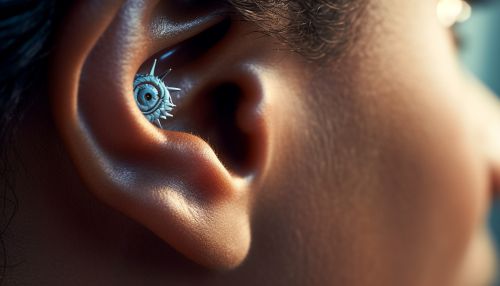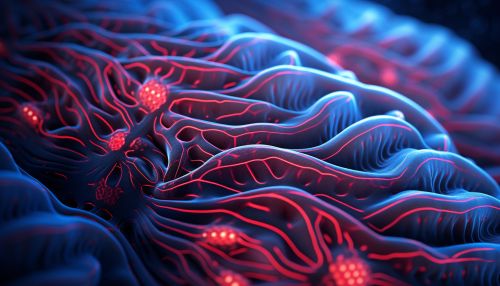Sensory System
Overview
The sensory system is a part of the nervous system responsible for processing sensory information. It consists of sensory neurons, pathways, and structures that capture information from the environment and relay it to the brain. The sensory system is critical for our interaction with the environment and plays a key role in the perception of our surroundings.


Components of the Sensory System
The sensory system is composed of the five traditional senses: sight, hearing, touch, taste, and smell, as well as other senses that provide information about body balance, temperature, pain, and position.
Visual System
The visual system is the part of the sensory system that allows organisms to see. It interprets the information from visible light to build a representation of the surrounding environment. The visual system carries out a number of complex tasks, including the reception of light and the formation of monocular representations, color differentiation, the perception of depth, and object recognition.


Auditory System
The auditory system is the sensory system for the sense of hearing. It includes both the sensory organs (the ears) and the auditory parts of the sensory system. The auditory system is responsible for converting sound waves into electrical signals which can be interpreted by the brain to identify and perceive the sounds.
Tactile System
The tactile system, or sense of touch, is a complex sensory system that is responsible for producing our sense of touch. It is part of the somatosensory system, and it is activated by pressure, vibration, or movement against the skin.


Gustatory System
The gustatory system, or sense of taste, is the sensory system that is partially responsible for the perception of taste (flavor). It sends signals to the brain primarily through the facial nerve, which carries taste sensations from the anterior two-thirds of the tongue and the glossopharyngeal nerve, which carries taste sensations from the posterior one-third of the tongue.
Olfactory System
The olfactory system, or sense of smell, is the part of the sensory system used for smelling (olfaction). It is often considered part of the gustatory system because of its close relationship to taste.


Other Senses
In addition to the traditional five senses, humans also have sensory systems for balance (the vestibular system), temperature (thermoception), pain (nociception), and body position (proprioception).
Sensory Processing
Sensory processing refers to the way the nervous system receives, organizes, and responds to sensory input. This process is essential in enabling individuals to perform complex tasks in their everyday environments.


Disorders of the Sensory System
There are many disorders that can affect the sensory system, including sensory processing disorder, blindness, deafness, and others. These conditions can have a significant impact on an individual's ability to interact with their environment and lead a normal life.
